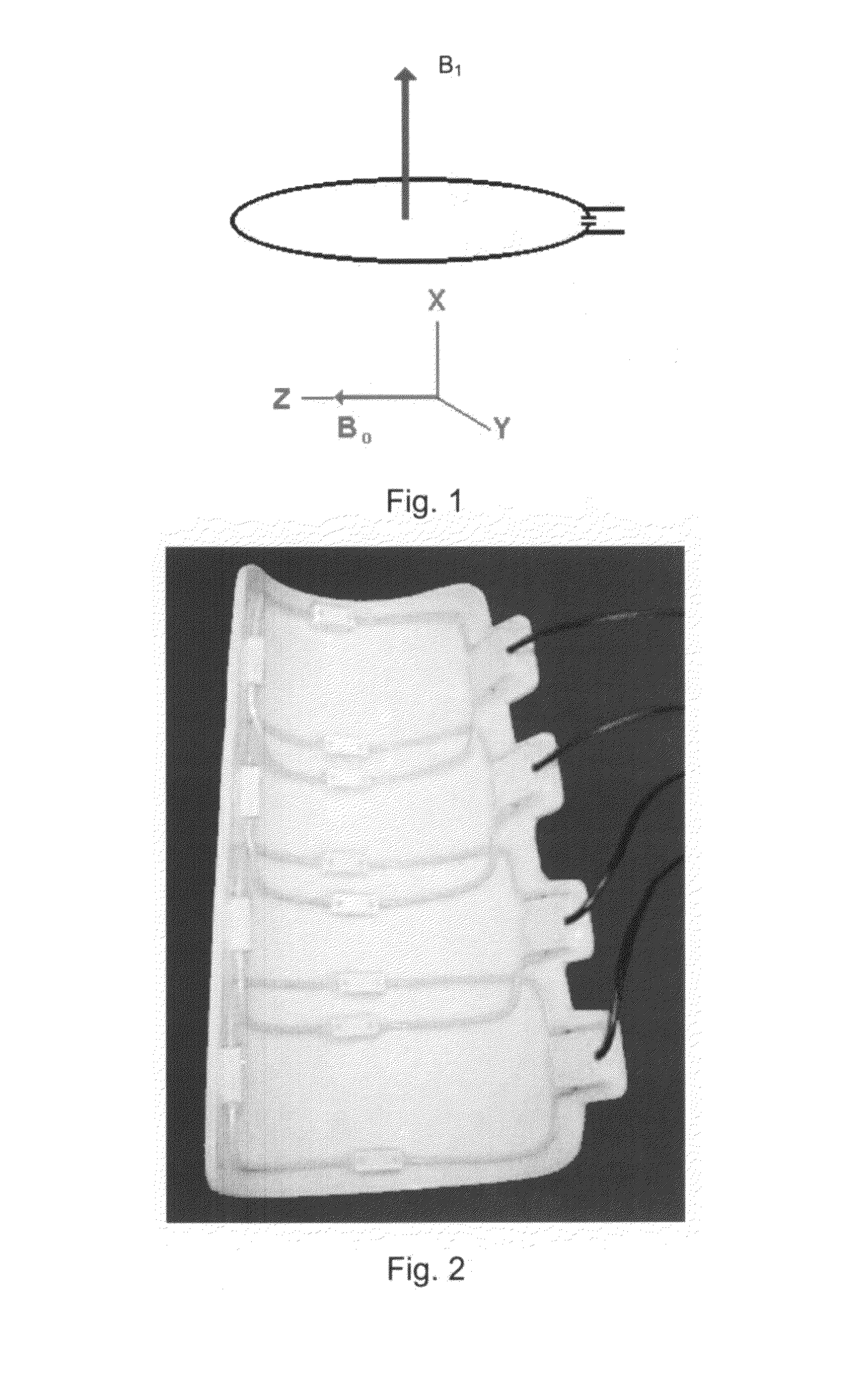Radiofrequency magnetic field resonator and a method of designing the same
a radiofrequency magnetic field and resonance technology, applied in the field of magnetic resonance analysis, can solve the problems of affecting the quality of analysis, affecting the design of bird cage coils, and similar limitations, so as to minimize electromagnetic interactions and minimize magnetic field inhomogeneities
- Summary
- Abstract
- Description
- Claims
- Application Information
AI Technical Summary
Benefits of technology
Problems solved by technology
Method used
Image
Examples
example 1
A Linear RF Resonator
[0201]A prototype of a linear resonator having two conductive elements was designed and built for imaging a rat head in an 8.46 T static magnetic field generated by a AVANCE 360 WB spectrometer, purchased from Bruker Medizintechnik GmbH, D-76275 Ettlingen, Germany.
[0202]Description of the Prototype
[0203]The ratio between the resonator size and the resonance wavelength was selected to be about 0.02, hence, any variation of the RF phase was negligibly small (the so called “near-field approximation”). The mathematical reason for the smallness of variation is that the variation is proportional to the sine of the distance from the conductive element, hence, for distances which are sufficiently smaller than the wavelength, the sine (and the variation) approaches zero. Specifically, the distance from the conductive surfaces to the center of the imaged sample was 1.5 cm and the resonant wavelength was 83.2 cm. For such configuration the change in the wave amplitude over...
example 2
A Quadrature RF Resonator
[0237]Following is a description of a quadrature RF resonator designed as two decoupled linear RF resonators.
[0238]Reference is now made to FIG. 20 illustrating a top view of the quadrature RF resonator of this example. The quadrature resonator of this example includes four conductive elements arranged as two pairs, designated 12 and 12a. Pair 12 and pair 12a are positioned so that the respective symmetry axes are perpendicular to each other. Antiparallel currents 16 are driven through pair 12 and pair 12a, where, according to the common convention, current which is outgoing downwards (into the plane of FIG. 20) is designated by the cross symbol and current which is incoming upwards is designated by the dot symbol. Currents 16 are driven by a split phase RF source, so that the voltage on pair 12 is shifted by 90° with respect to the voltage on pair 12a.
[0239]Currents 16 generate magnetic field in and outside the volume surrounded by the conductive elements....
PUM
 Login to View More
Login to View More Abstract
Description
Claims
Application Information
 Login to View More
Login to View More - R&D
- Intellectual Property
- Life Sciences
- Materials
- Tech Scout
- Unparalleled Data Quality
- Higher Quality Content
- 60% Fewer Hallucinations
Browse by: Latest US Patents, China's latest patents, Technical Efficacy Thesaurus, Application Domain, Technology Topic, Popular Technical Reports.
© 2025 PatSnap. All rights reserved.Legal|Privacy policy|Modern Slavery Act Transparency Statement|Sitemap|About US| Contact US: help@patsnap.com



